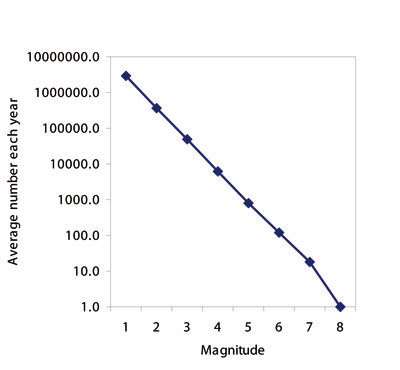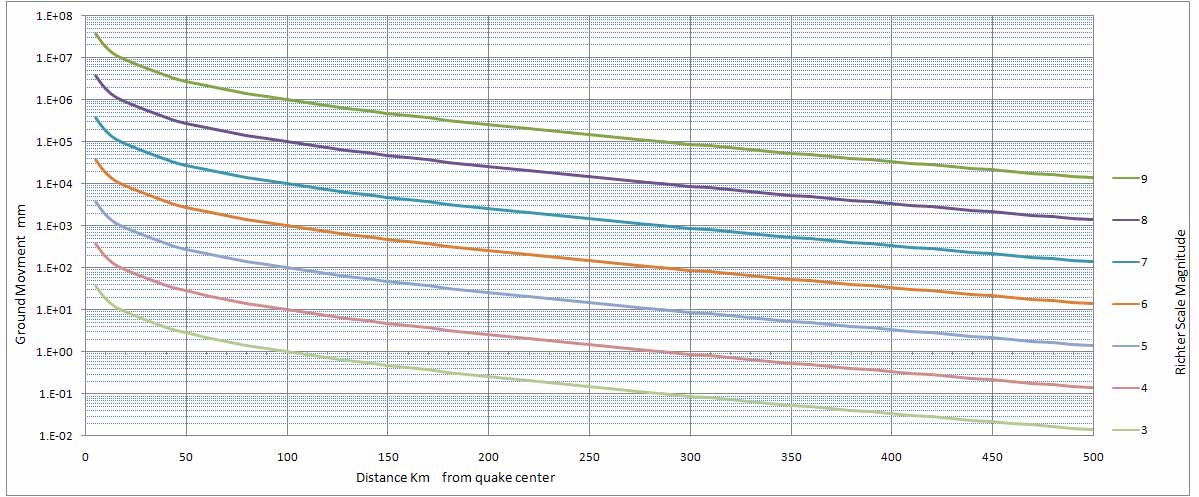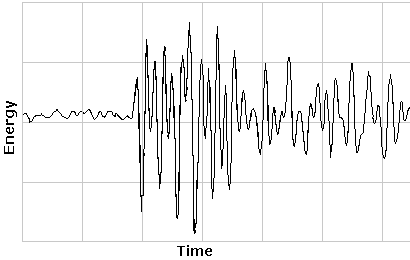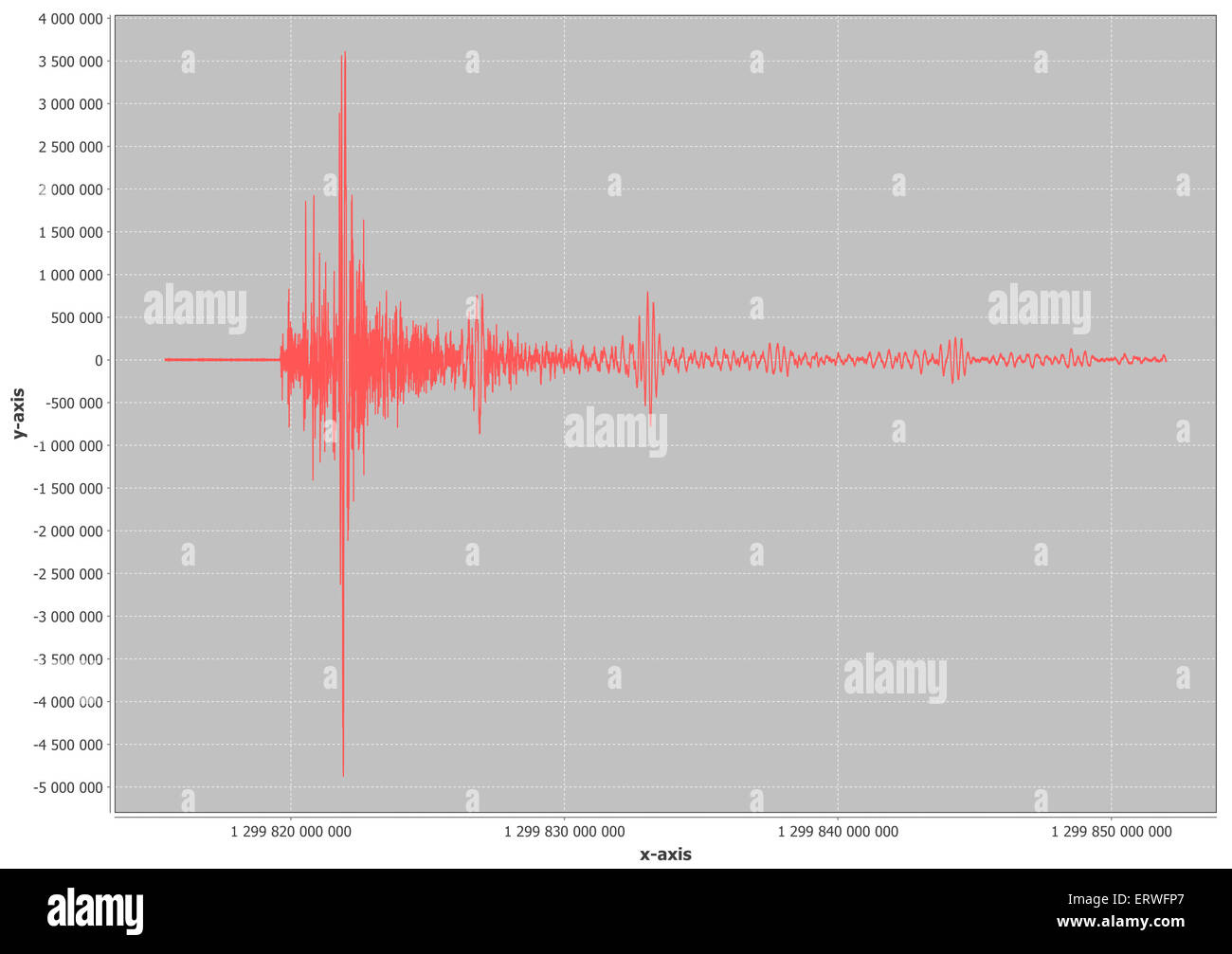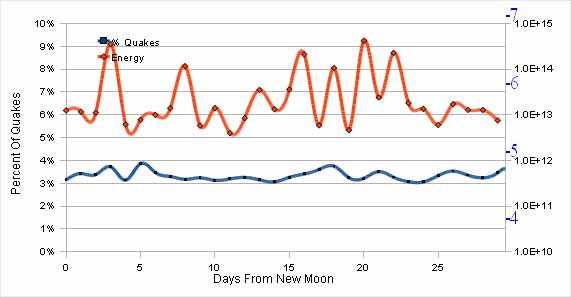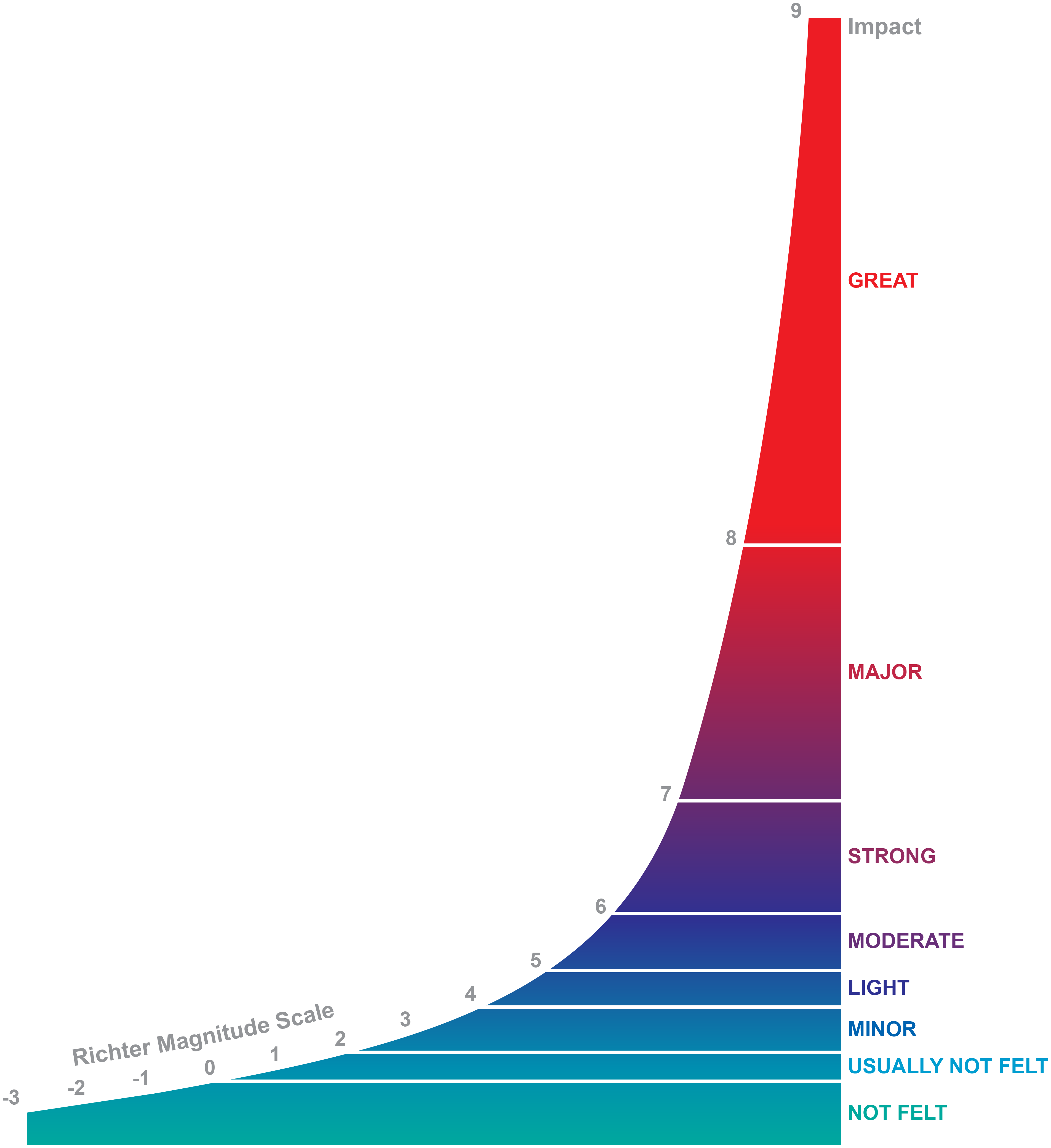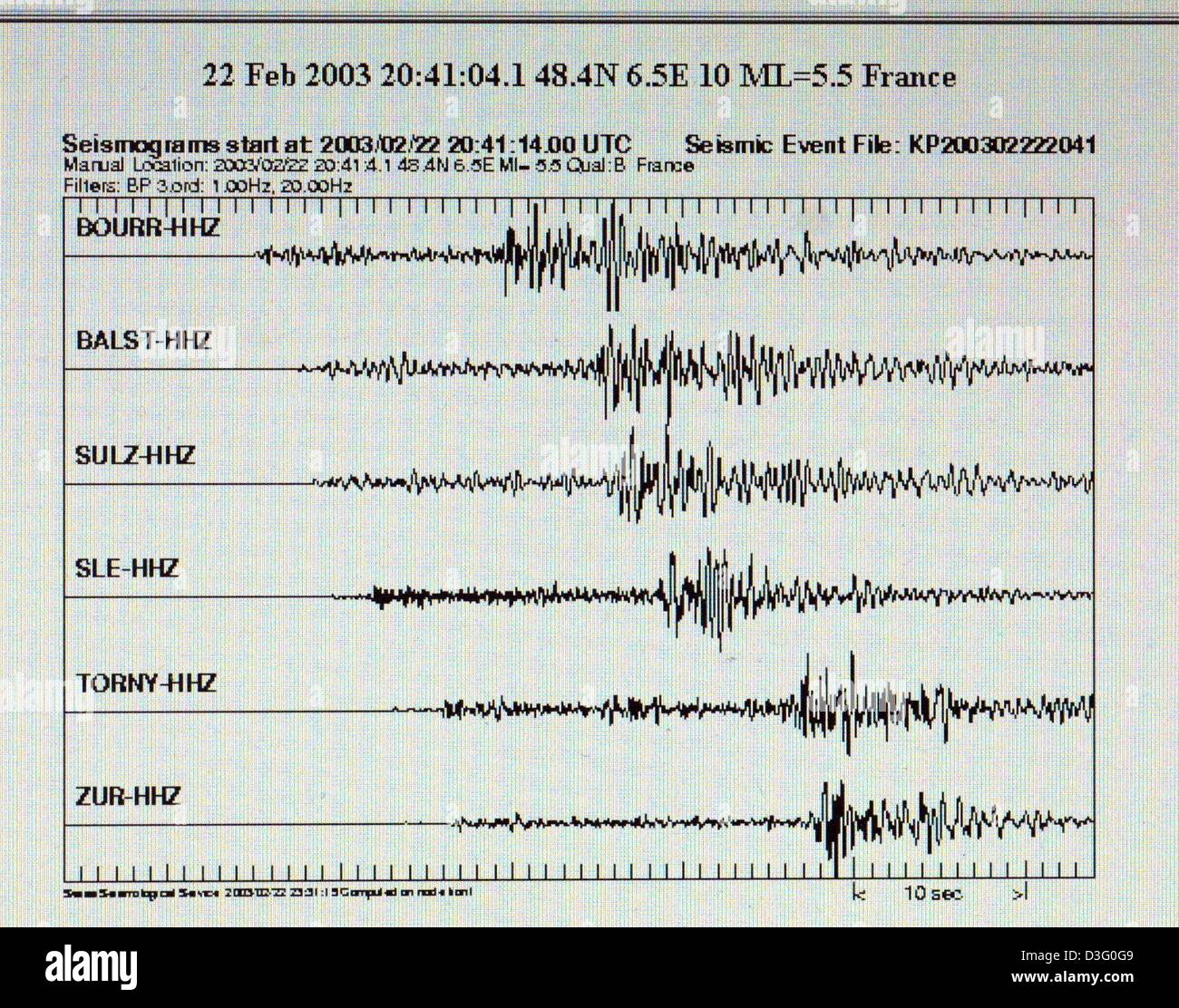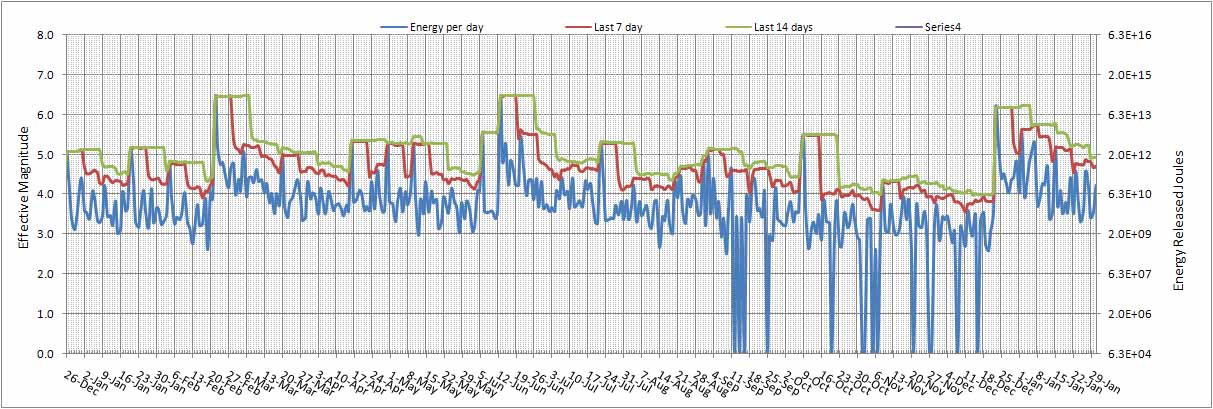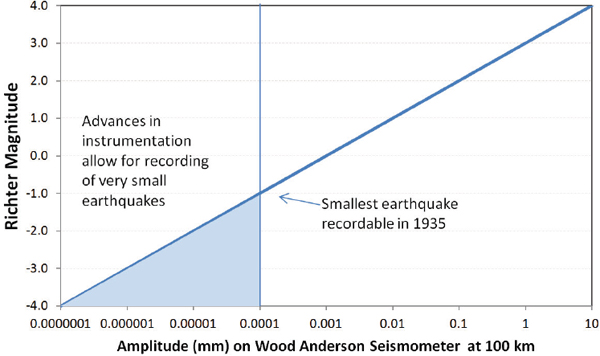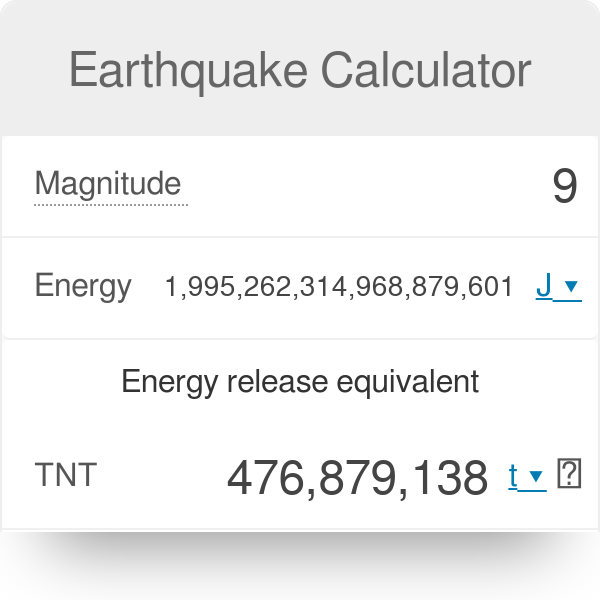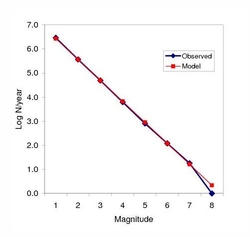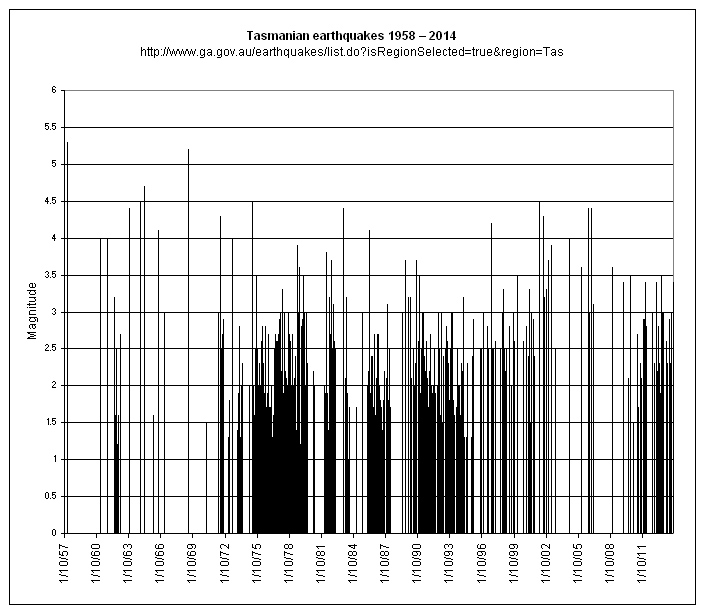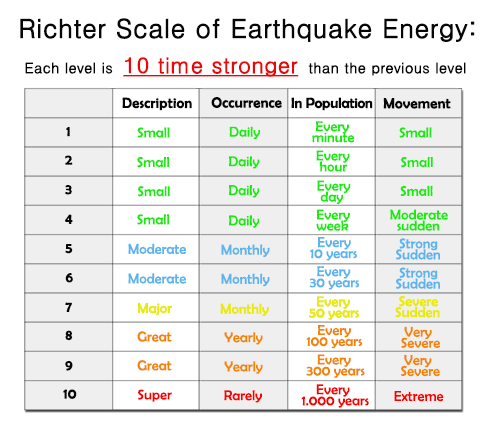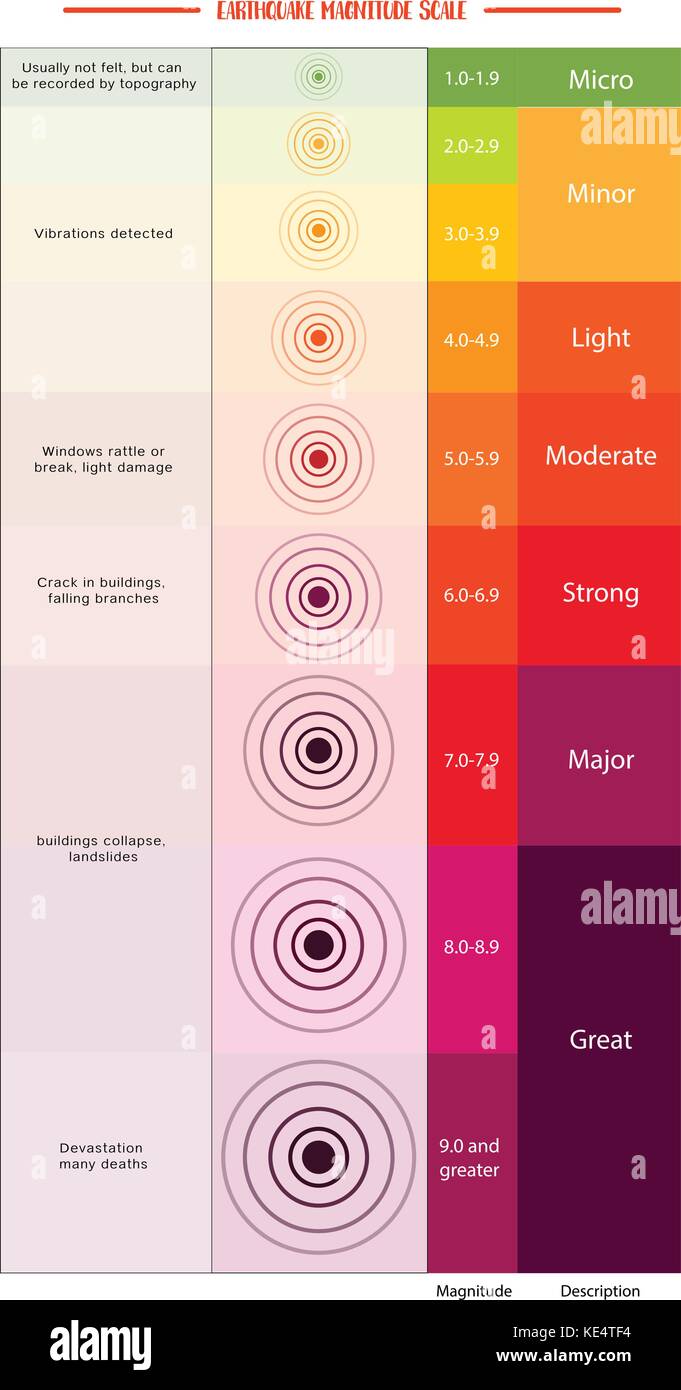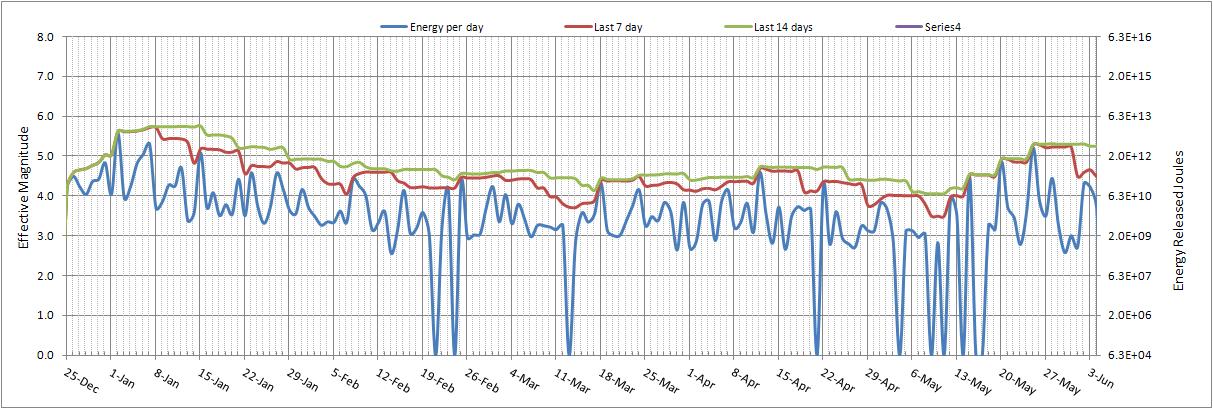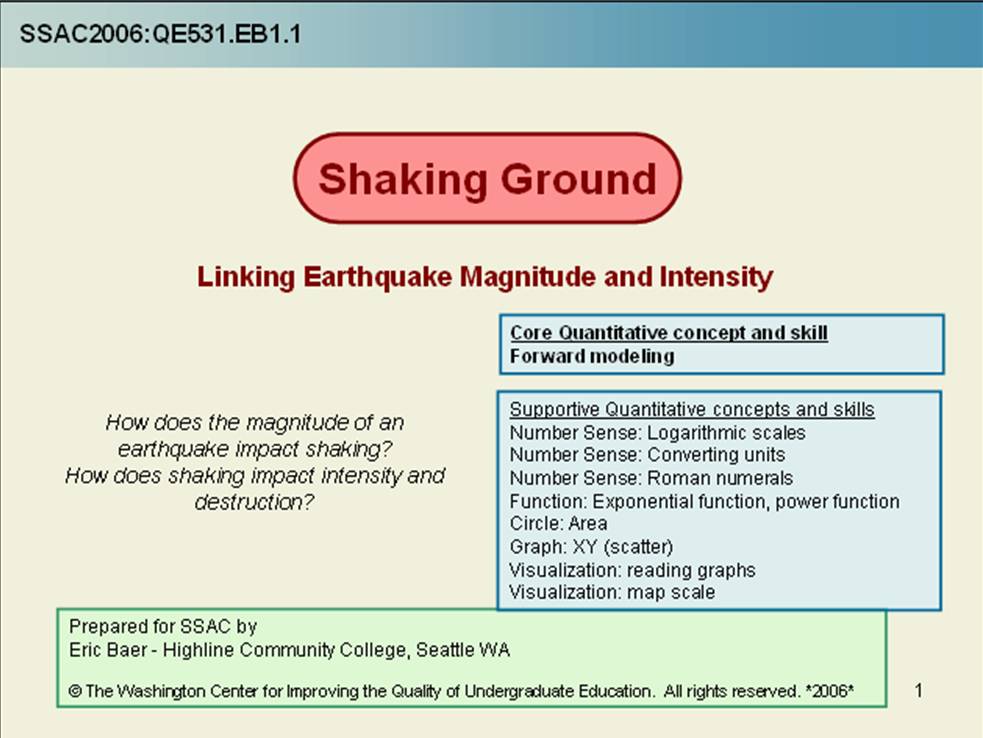Earthquake Scale Graph

Usually not felt but can be recorded by seismograph.
Earthquake scale graph. The numbers 10 and 20 and 60 and 70 are not the same distance apart on a log scale. Richter and presented in his landmark 1935 paper where he called it the magnitude scale. A logarithmic scale or log scale is a way of displaying numerical data over a very wide range of values in a compact way typically the largest numbers in the data are hundreds or even thousands of times larger than the smallest numbers such a scale is nonlinear.
Richter and beno gutenberg. Earthquake size as measured by the richter scale is a well known but not well understood concept. Magnitude is expressed in whole numbers and decimal fractions.
Estimated number each year. The richter scale also called the richter magnitude scale or richter s magnitude scale is a measure of the strength of earthquakes developed by charles f. Because of various shortcomings of the m l scale most.
That is the wave amplitude in a level 6 earthquake is 10 times greater than in a level 5 earthquake and the amplitude increases 100 times between a level 7 earthquake and a level 9 earthquake. For example a magnitude 5 3 is a moderate earthquake and a 6 3 is a strong earthquake. Often felt but.
The richter scale is logarithmic meaning that whole number jumps indicate a tenfold increase in this case the increase is in wave amplitude. Because of the logarithmic basis of the scale each whole number increase in magnitude represents a tenfold increase in measured amplitude as measured on a seismogram. Richter scale widely used quantitative measure of an earthquake s magnitude size devised in 1935 by american seismologists charles f.












